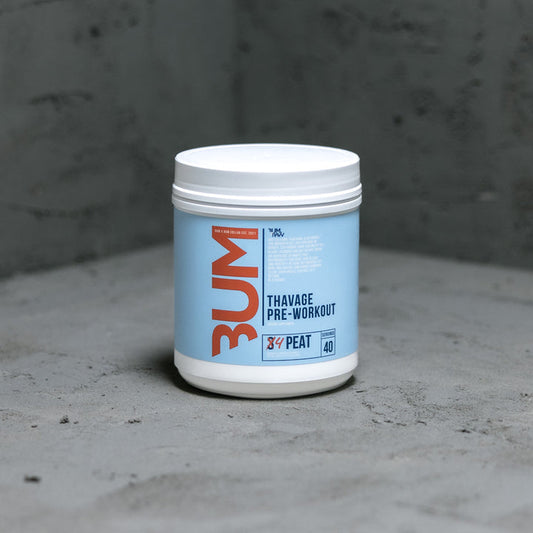The bench press is one of the most popular and effective chest exercises you can do in the gym. When performed correctly, it works the pectoral muscles, front deltoids, and triceps. However, proper form is crucial to avoid injury and isolate the chest muscles. Here is a comprehensive guide to perfect bench press form.
Setting Up
- Choose a flat bench that is adjustable. Adjust it so your feet can plant firmly on the floor when you are lying down.
- Set the bench directly under the barbell in the power rack or squat rack.
- Load an appropriate weight onto the barbell. It's better to start light and focus on form before increasing the weight.
- Lie back on the bench and position yourself so your eyes are directly under the barbell.
Hand Positioning
- Grip the barbell slightly wider than shoulder-width apart. This puts less stress on your shoulders compared to a narrow grip.
- Wrap your thumbs around the bar. This helps keep the bar in your hands.
- Keep your wrists straight and avoid bending them back during the lift.
Foot Positioning
- Plant both feet firmly on the floor about shoulder-width apart.
- Do not cross your feet as this can limit your stability.
- You may benefit from elevating your feet on a box or plate to help maintain tension in your legs.
Back Positioning
- Maintain a slight arch in your lower back throughout the movement. Do not flatten your back against the bench.
- Pull your shoulder blades down and back to keep your chest lifted. Do not shrug or hunch your shoulders.
- Keep your butt, upper back, and head firmly on the bench at all times. Do not lift your butt off the bench.
Breathing and Bracing
- Take a deep breath and brace your core by tightening your abdominal muscles. Hold this breath during the entire rep.
- Do not hold your breath in your chest. Focus on pushing your belly out against your belt or weightlifting belt if you use one.
The Descent
- Keep your elbows at about a 45 degree angle tucked in close to your body.
- Slowly lower the bar to the middle of your chest between your pecs and nipples.
- Touch the bar lightly onto your body without bouncing. Allowing the bar to sink into your chest increases muscle tension.
- Keep full control of the bar. Do not release and relax your arms at the bottom.
The Press
- Press the bar back up following the same path you lowered it down.
- Focus on squeezing your pectorals and keep tension on the chest throughout the lift.
- Avoid locking out your elbows fully at the top to keep tension on the pecs. Stop about 5-10 degrees before locking out.
- Do not bounce the bar off your chest or raise your butt off the bench during the press. Keep proper form.
Breathing
- Breathe out as you push the weight up. Avoid holding your breath during the press. This can spike your blood pressure.
- Inhale again at the top as you prepare to lower the bar for the next rep.
Common Mistakes
- Allowing wrists to bend back. This puts strain on the wrists and forearms.
- Touching too low on the chest. The proper touch point is between the pecs and nipples.
- Bouncing the bar off the chest. The bar should touch lightly without bouncing.
- Not keeping shoulders back. Make sure to retract your shoulder blades and keep your chest lifted.
- Pressing in a 'flared elbow' position. Keep elbows tucked at a 45 degree angle.
- Exhaling at the sticking point. Avoid holding your breath during the press up.
Troubleshooting Plateaus
- Use a full range of motion. Touch your sternum then press back up just before lockout.
- Pause briefly on your chest to eliminate bounce and increase tension.
- Improve mind-muscle connection. Focus on squeezing the pecs.
- Check for muscle imbalances. Do isolation work if needed to bring up weak areas.
- Consider varying your grip width. A closer or wider grip can help strengthen weak points.
Increasing Weight
- Start with lower rep sets like 5x5 before increasing weight. Higher reps are better for form practice.
- Increase weight slowly. Add only 2.5-10 pounds per session focusing first on proper form at each new weight.
- Ask a spotter to provide lift off assistance to unrack heavier weights safely.
- Use wrist wraps if your wrists are limiting your press. Wrap them tightly but not so tight they cut off circulation.
- Strengthen your triceps, chest, and front shoulders with assistance exercises to push through plateaus.
Programming the Bench Press
- Use a variety of rep ranges from lower 3-5 rep sets to higher 8-12 rep sets to build strength and muscle.
- Alternate close grip, wide grip, incline, and decline presses to hit the muscles from different angles.
- Allow at least 48 hours between bench press training sessions for full muscle recovery.
- Include bench press variants like dumbbell bench press and dips in your program.
Advance to Intermediate Programming
Once you have the basics down and have reached a 225 bench press for reps, you can start more advanced powerlifting style bench programming. This includes:
- Focusing heavily on the bench 2-3x per week.
- Periodizing your training into hypertrophy blocks, strength blocks, and peaking blocks.
- Using advanced techniques like board presses, floor presses, pin presses, and banded/chained bench presses.
- Strategically using the competition bench press vs. close grip and other assistance variants.
- Setting and tracking 1 rep maxes to precisely measure progress over time.
- Utilizing a structured progression model like 5/3/1 by Jim Wendler.
- Minimizing isolation work to prioritize heavy compound lifts.
- Maximizing recovery with strategic deload weeks.
But beginners should not jump into an advanced program prematurely. You must patiently build your baseline of proper form, strength, and joint preparedness first.
Conclusion
The bench press stimulates substantial muscular growth in the chest, shoulders, and triceps when proper form is followed. But subtle form errors can reduce its effectiveness and lead to injury. Use this guide to perfect your setup, technique, breathing, and pressing path. Be patient in adding weight and work diligently to correct form issues. Master the basics first before considering more advanced methods. With practice, your bench press will steadily improve alongside your chest development.
Featured collection
-
Black Magic BZRK
Regular price $44.00 USDRegular priceUnit price / per -
Super Human Pump, Stimulant Free Preworkout
Regular price $48.00 USDRegular priceUnit price / per -
Black Magic Protein
Regular price $44.00 USDRegular priceUnit price / per -
 Sold out
Sold outCBum Thavage Preworkout
Regular price $44.00 USDRegular priceUnit price / per



